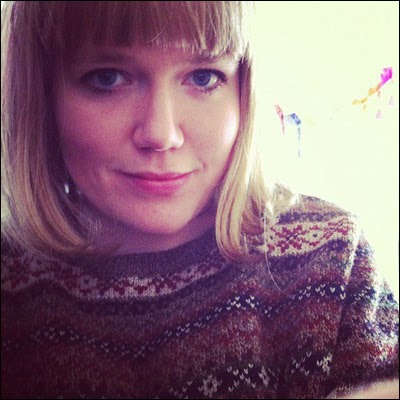
It was the visual form-making, playfully provoked and nurtured by both nature and cities, that attracted me to the art of Alice Stevenson. Based in London, she is an illustrator, surface pattern designer, and educator. Here, she shares her thoughts on drawing from her environment that influences her attitude and work:
On being an illustrator and a writer
From your website, you stated that you are “Inspired and informed by the patterns and structures found in nature…” Can you expand on this? What specific patterns and structures, or specific aspects of them, influence you and your work?
I’m inspired by many different natural patterns and forms. Whether it be the structure of a leaf or a coast line from a distance. There is something about the inevitable beauty of natural forms that I try and channel when I draw, paint, or compose an image.
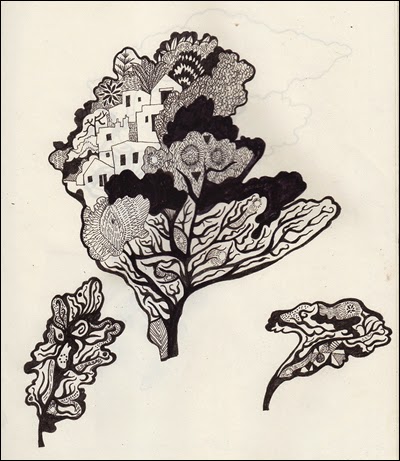
Italy
How did you arrive at wanting to become an illustrator?
I have always loved books and reading, and drawing, so in some ways, it was inevitable. I enjoy the problem-solving involved in creating communicative imagery and working to a brief, and I’ve always liked the idea of my work going out into the world in books and on packaging, for example, as opposed to just sitting in a frame somewhere.
I enjoy the topic and sampling of illustrations of your book
“Ways to Walk in London” (also liking the plainspoken title).
Can you give a tour of how this book became a reality?
Hannah Macdonald, founder of September Publishing, approached me to potentially be involved somehow with the endeavour. She suggested that I potentially had a “book in me,” and through conversations, we identified that my relationship with my surroundings, and exploring on foot, are where my true interests lie. So the book was born as a written and visual exploration of the city. I began by just walking, drawing, and writing. Gradually, the format and purpose of the book began to take place. Up until the end, it’s been a real process of discovery.
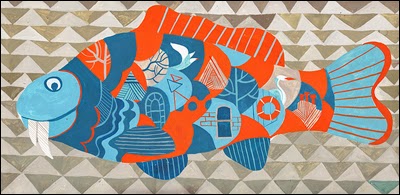
Canal
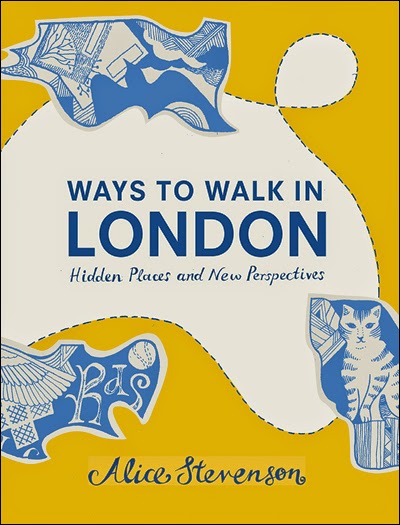
Book cover
In addition to illustrating, you also wrote
“Ways to Walk in London.” How did writing become
a part of your toolkit to make things?
I’ve always enjoyed writing, creating content for my blog, etc., but I didn’t ever see it as a serious skill of mine. Again, it was Hannah, who saw potential for me as a writer and encouraged me to try. My writing voice proceeded to tentatively emerge.
Does writing come easy for you to do?
And how is writing useful to you?
I find it much easier to sit down and draw, but I think this is largely because I’ve been drawing pretty constantly for a long time, so my drawing “muscle” is far more developed. I find knowing where to start with writing tough, and it certainly takes a lot out of me. I think I’m still in the process of mastering at a craft, I’m beginning to find a way of working I’m comfortable with, and techniques to overcome obstacles. It’s useful, in that I feel that through writing, I’m somehow able to think more clearly. I also feel, that through writing this book, I understand myself better, and can identify and articulate parts of myself in a way I couldn’t before. This is useful creatively and in all aspects of life.
Who and/or what keep(s) you going as an illustrator?
Sparkling water, coffee, music, Radio 4, and knowing that there’s a large glass of wine and people, or a person I love, waiting for me at the end of it. I’m fairly addicted to drawing, so stopping isn’t an option.
Your style of illustrations reminds me of the sketches by the architect Le Corbusier and the paintings by Joan Miró and Marc Chagall. Both are vigorously playful. Are these fair comparisons? How would you describe your visual style?
They are very flattering comparisons. I find it incredibly hard to define my visual style, but some words/descriptions that occur again and again are playful composition and line, decorative, pattern, detail, combined with flat colour—worlds within worlds.
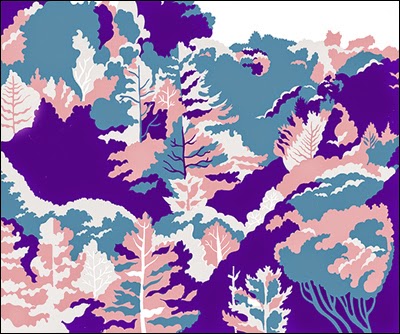
Big Sur
How do you get the word out about what you do?
How do you attract people to your work?
The usual social media channels are helpful. Through sending newsletters, contacting existing and potential clients. I have an agent too who touts my wares.
How do you practice drawing in order to feel competent
and confident at realizing this skill?
I draw most days which keeps me pretty capable. I try to practice my observational skills from time to time, so I remember to really look at and study my subject. This then feeds into imaginative drawing.
What is your vision of growth, as it relates to your career?
I’m not sure, I’m not a very conventionally ambitiously-minded person. I would like to keep being able to work on interesting projects, and exploring my interests through writing and drawing. I want to continually improve and hone my skills, and contribute something worthwhile to the world.
What is your definition of success?
I think success is creating substantial and interesting work that comes from a genuinely creative and curious place that gives something meaningful to the world, and makes it a more beautiful place. I can’t really think of any higher achievement than that.
I very much enjoy the samples from your sketchbooks.
Do you still sustain a sketchbook? If so, how do manage to make or find time to sketch?
I do, also I’ve not been as consistent with it over the last couple of years, I think I began to feel that I was going round in circles with it a bit. My urge to draw in my sketchbooks is definitely returning to me though. Good sketching times are train journeys, Sunday afternoons in the garden, or by a fire, in front of a film, in fact, whenever you get a chance to sit down.
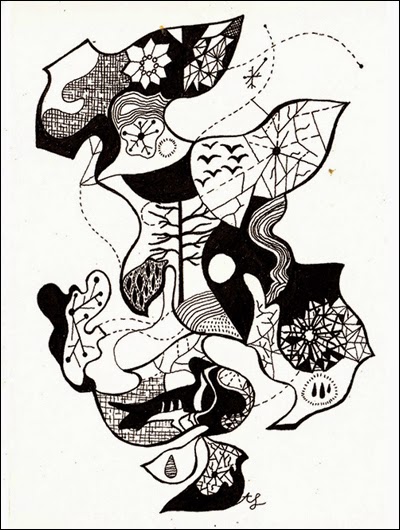
Mindmap
On creativity, illustrating, working
How do you handle disagreements while you’re working?
A rule I try and live by is to never send an email in anger.
It’s nice to be nice.
For those times when you happen to feel discouraged
while working, how do you deal with it?
Music always heals. A brisk walk clears the head. I find just slowing down and focusing on my drawing restores my peace of mind. Also, just remembering that it’s all very temporary, and our lives are “just a ride” in the words of Bill Hicks. It’s best to cultivate a lighthearted approach to things.
What is your workspace like? How does it contribute
to doing the quality of work you want to do?
Bright and spacious, I share with some very creative and inspiring people, and there is good encouragement and camaraderie. I put pictures up everywhere of images that inspire me, and I have all my books close-by.
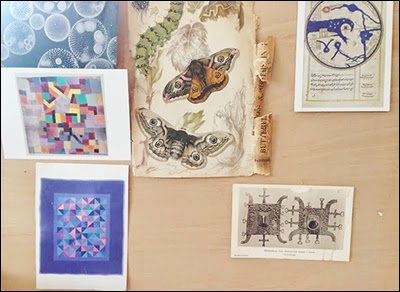
What tools do you use and recommend to work:
for collaborating, getting things done, running your practice?
A very nice notebook in which to write lists and thoughts. And to doodle in. I’m a Moleskine girl, through and through.
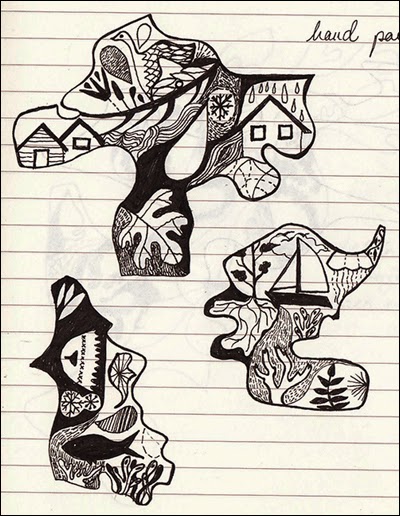
New England
What or what in the worlds of art and illustration
do you recommend for exploration?
I just had my attention drawn to the work of Emi Uoka, it’s understated and subtle with a melancholy atmosphere which appeals to me. I’m currently swooning over the work and legacy of Sophie Taeuber-Arp, a Swiss artist, working in the early 20th century, who pioneered geometric abstraction. I’m also currently rather obsessed with the work of Brian Wildsmith, a children’s book illustrator and painter. He created a lot of his best known works in the 60’s and 70’s, and I find the colours and combination between the figurative and abstract, within his work, delightful.
How important is it for you to follow your instincts?
For much of my drawing, painting, and image creation, I try and almost entirely disengage from my conscious mind, and let my instincts take over and guide the work. When I’m working to a brief or to a specific end, cold reason and practicality have to wade in at regular intervals to keep me on track.
If a person approached you and said, “I want to illustrate,”
what’s your response?
You need to be happy to spend vast quantities of time alone,
and gain a great deal of enjoyment from drawing for it to be a rewarding career choice.
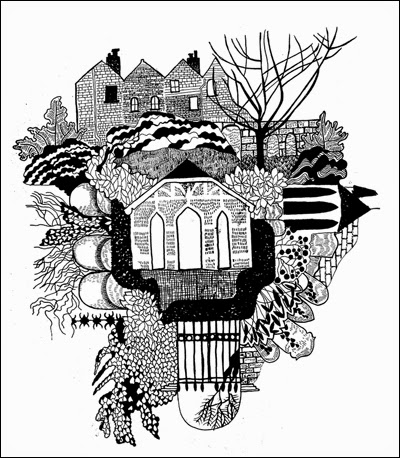
Church yard
How does the city of London contribute to your work? What makes it special for startups/business/creativity-at-large?
Geographically, London is made up of lots of small villages and towns all clustered together, and you can travel between different worlds and atmospheres within it. Having lived here my entire life, and explored and written a book about it, I can honestly say that I’ve only scratched the surface of the place. I find its potential of inspiration, and hidden environments, very inspiring. I think creative people are attracted to London for this reason. Also whilst being a bustling metropolis, it’s an incredibly green and leafy city, full of public gardens. I find the aesthetic of an urban environment, interacting with nature, pleasing. I feel that all the extremes of life coexist here, the trouble with living in London is it can make other cities seem a bit one dimensional in comparison.
• • •
All images courtesy of Alice Stevenson.
• • •
Related: Illustrator Lucy Engelman, of Grand Rapids, Michigan, is also inspired by nature—my Interview.
• • •
Read more from Design Feast Series of Interviews
with people who love making things.
Please consider supporting Design Feast
If you liked this lovingly-made interview, show your appreciation by helping to support my labor of love—Design Feast, which proudly includes this blog. Learn more.
